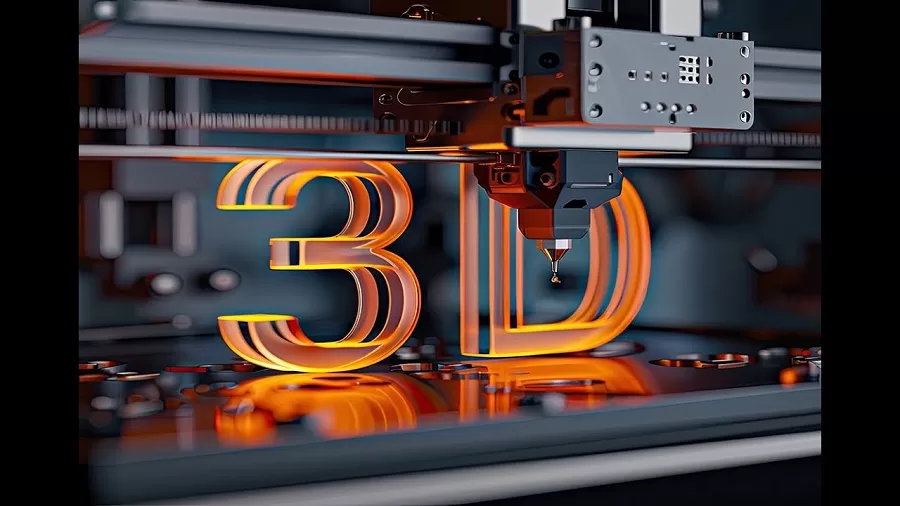Entertainment
Bringing Imagination to Life: 3D Printing’s Impact on Entertainment Industries

- In film, television, and animation, 3D printing creates affordable and intricate models and special effects.
- For video games, 3D printing allows personalised merchandise and tangible, immersive replicas of in-game items.
- In live entertainment, 3D printing streamlines set design, costumes, and props, offering creative freedom and faster production.
3D printing has revolutionised industries globally, with entertainment standing out as a particularly intriguing area of transformation. Whether in film production, video games, or live performances, 3D printing drives innovation, reduces costs, and enhances audience experiences. This essay explores the profound impact of 3D printing on the entertainment industry and highlights why it is a game changer for creators and audiences.
Transforming Movie and Television Production
3D printing has become a vital asset in the film and television industries, revolutionising how props, set designs, and visual effects are created. By moving beyond traditional techniques like manual sculpting or CGI, studios now use 3D printing to produce highly detailed, cost-effective, and precise models.
3D Printing for Animation and Special Effects
3D printing has transformed animation and special effects by providing a faster, more efficient way to create realistic objects for use in production. Traditionally, animators relied on physical models or extensive CGI work, but 3D printing now enables the creation of detailed objects that can be seamlessly scanned and integrated into animated scenes.
From intricate creatures to complex environments, 3D printers produce sophisticated models that enhance the lifelike quality of characters and settings while streamlining production timelines. Leading studios such as Pixar and DreamWorks have embraced this technology, utilising it to push the limits of animation while significantly reducing costs.
3D Printing in Video Games
The video gaming industry has seen remarkable advancements thanks to 3D printing, particularly with the rise of virtual reality (VR) and augmented reality (AR). This technology bridges the gap between the digital and physical worlds, allowing gamers to create tangible versions of their favourite characters, accessories, and vehicles.
Companies like Hasbro and LEGO leverage 3D printing to offer customisable merchandise. This enables fans to design and print personalised items that deepen their connection to the games they love. Gamers can now hold iconic characters or gear, creating a unique experience.
Additionally, some developers use 3D printing to craft real-world replicas of in-game objects. These items can serve as props or be integrated into immersive projects, further blurring the lines between virtual and physical realities.
Enhancing Live Entertainment with 3D Printing
Live entertainment, including theatre productions and concerts, has greatly benefitted from 3D printing. This technology enables designers to create intricate and complex set pieces, costumes, and props that are often impossible to achieve using traditional methods. The result is enhanced creative flexibility and faster production timelines, allowing for the development of more immersive and imaginative worlds for live performances.
In the music industry, 3D printing is utilised to craft personalised stage designs, custom instruments, and wearable performance equipment for performers. These unique creations reflect the artist’s identity and elevate the visual appeal of their shows, creating unforgettable experiences for audiences.
Future Possibilities: Customized Customer Experiences
The future of 3D printing in entertainment promises unparalleled opportunities for personalised customer experiences. Soon, fans could buy limited-edition 3D-printed replicas of iconic props or set pieces from their favourite movies or even create their own costumes and interactive items at home, thereby blurring the boundaries between the digital and physical worlds.
In theme parks and museums, 3D printing could revolutionise interactive experiences by enabling real-time creation of set designs and props. Visitors might explore dynamic environments that evolve based on their participation, offering ever-changing, immersive experiences. This level of customisation and engagement represents a bold leap forward in connecting audiences with entertainment on a deeply personal level.
Shaping the Future of Entertainment with 3D Printing
3D printing is transforming the entertainment industry, unlocking new possibilities for creators, designers, and audiences. Its applications span film sets, video games, live events, and personalised consumer experiences, showcasing its versatility and impact. As technology evolves, we can expect even more groundbreaking innovations that redefine the boundaries of creativity, making entertainment more interactive, immersive, and accessible.
As this trend grows, one thing remains clear: 3D printing will be a cornerstone in shaping the future of entertainment for years to come.



















































